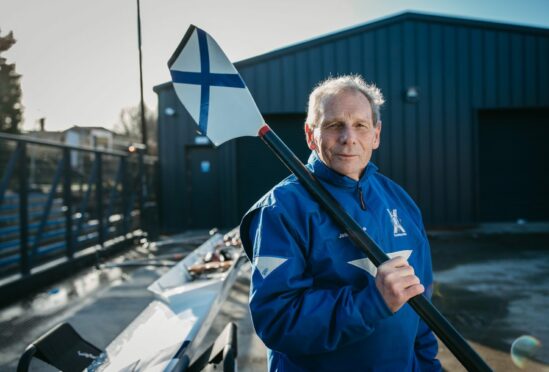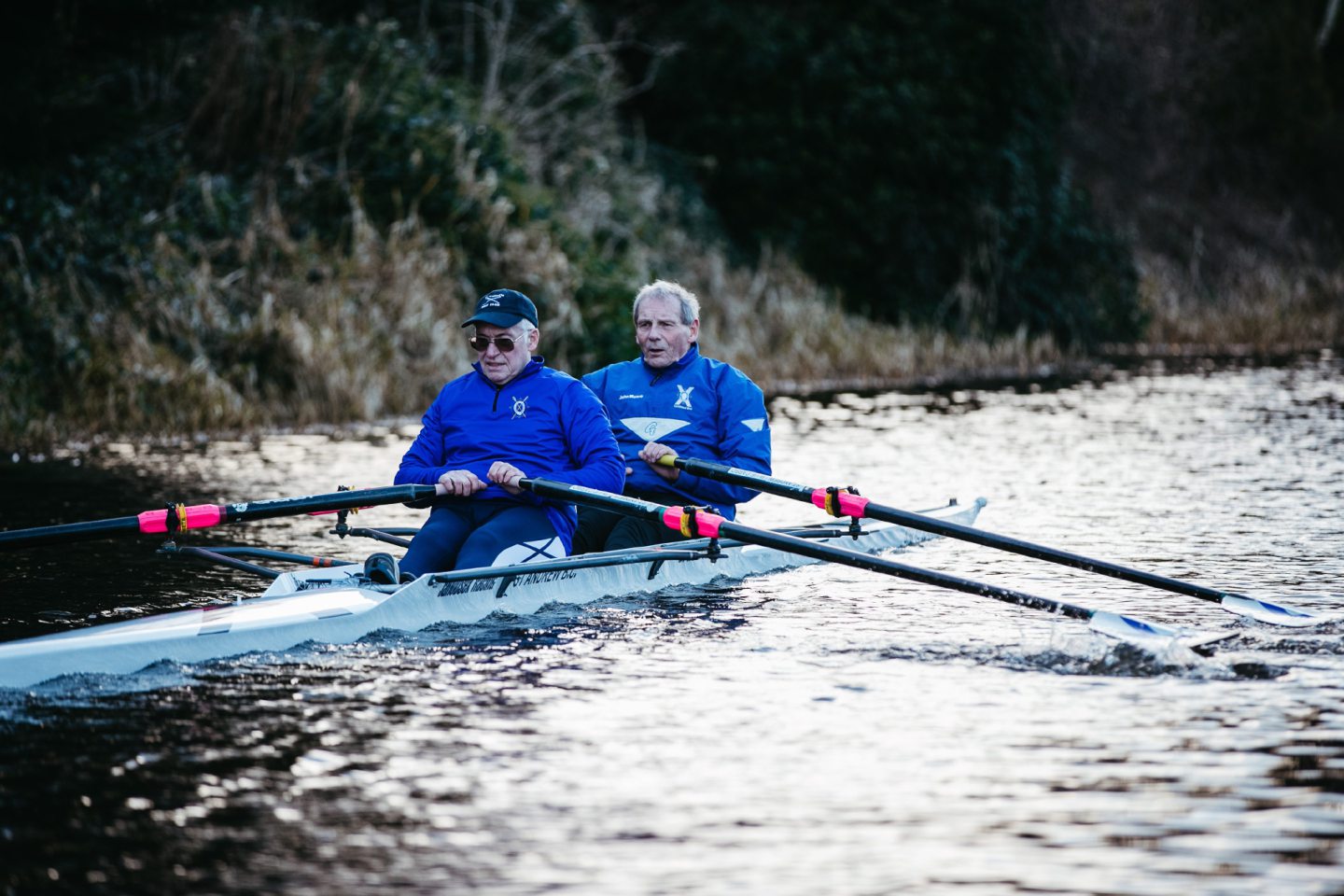
Regular exercise can add almost seven years to your life, according to experts, who say it’s never too late to start.
Edinburgh University emerita professor Nanette Mutrie says we should exercise to make us feel better and make small changes which will make a big impact to our health.
Professor Mutrie, who is an expert in the psychology of physical activity for health, said: “Exercise is critical for the quality of life and the most important thing for anyone dipping into their 60s and 70s.
“You are never too old to get stronger and it is never too late to start, even if you think it is pointless when you may not have played football, run or been a member of the hockey team in your younger years.
“If there is a time to exercise it is your middle and later years. You are never too old to get stronger.”
Living longer is the conclusion of German research which looked at 13 studies in physical exercise and its association with life expectancy.
Mutrie suggests walking 10 to 15 minutes a day or every second day to begin with and while that helps with balance and strength it is also important to do presses against walls where you lean against them with your arms and lever yourself away.
Standing up and sitting down from your chair 10 times a day is also valuable in maintaining and building strength.
Balance can be built on standing on one leg, aiming to hold it for 30 seconds, if possible she adds.
“That can be done as you wait for the kettle to boil – better than standing around doing nothing.”
Balance helps prevents falls and hip fractures. Worryingly, one in three adults over 50 die within 12 months of suffering a break like this says Dr Sharon Brennan-Olsen, a senior research fellow at Melbourne University, Australia. This increased death risk remains for almost 10 years she says.
Mutrie says signing up to a gym should only be considered if you enjoy going and it isn’t a chore.
“There is no point embarking on an exercise regime which will fall away and make you feel you have failed,” she adds. “Instead, weave exercise into everyday living, slotting it into spare moments of your day.
From BMX to skateboarding: Researchers reveal how exercise and positive thinking helps cancer fight
Housework can become a lifesaver if building strength is woven into daily routines, she suggests.
Lifting baskets with wet laundry up and down takes only a few minutes.
“But doing this more than 20 times can turn it into a chore instead of an exercise,” she adds. “Standing on one leg alternatively while waiting for the kettle to boil is a good way of keeping your balance, vital for staying mobile and steady.”
Taking a walk to the local cafe for a chat with friends or neighbours improves our physical and mental health, she adds.
At 69, she walks her dogs daily and endorses an exercise routine Forth Valley Hospital have sited at Larbert Loch for visitors and patients to try.
It involves standing bench presses against park seats to toughen up arm and upper-body strength, leg lifts while sitting to build muscles and heel-to-toe walking to sharpen balance.
“No one wants exercise to be an ordeal, but more a bit of fun which is woven into life.”
Rower, 75: It keeps me active and I still enjoy it. I can’t wait for the big race
While many 70-somethings can creak a little getting out of an armchair, John Munro’s rows are creaking as he trains to race on the Thames.
The retired IT specialist, 75, is a member of the St Andrew Boat Club based at Meggetland on the Union Canal, Edinburgh, and he carries his boat weighing three stones almost daily from the shed to the water before hours of training, up to five times a week on the canal and a rowing machine at home.
Rowing has been his passion since he was 11 and he is living proof that exercise through middle-age and beyond helps prevent frailty and illness.
“Rowing has kept me fit and active and I am delighted to train for a chance at the Vesta Veterans Head of the River race on the Thames in March,” says Munro.
“I am the oldest member of the group of 14 people training together. It is a mixed-age team and a good feeling to be pulling your weight and aim for a place on the club’s boat.
“I row all year round and only lockdown and poor weather have made it impossible to get into the water some days.
“This has taken me all over the world to Australia, the US, Canada, South America. Everywhere but Russia and a couple of other countries.
“We carry our boats, which weigh about 15kg (almost two and half stones) from the boathouse to the canal and set off.
“You pass all sorts of wonderful wildlife on the boat and only last week I saw a kingfisher, just a few yards away.”
The boat race for which Munro is training is the Vesta Veterans Head next month where he will be the oldest competitor (skull) on the boat, racing over four miles with and against rowers in their fifties. Teams are matched by the average age on the boat.
Sarah Whitley, president of St Andrew Boat Club, says: “Head races are over long distances and John has been training hard, often in the cold and wet, to be considered for the races we have coming up. He is hugely dedicated.
Scientists: Regular exercise can slow the progress of Parkinson’s
“Rowing has taken off as a sport and we have a waiting list of people wanting to learn. We are very keen to give young people from all backgrounds the chance to try out rowing.
“Our new clubhouse was opened last month, built with investment from SportScotland, support from family trusts, and a great fundraising effort from our members. John cycled 75 miles – a mile for each of his years – along the Union Canal, raising thousands of pounds.”
Even at 75, Munro has a bit to catch up with the club’s oldest rowers – both in their 80s.
“John is our oldest competitive rower,” says Whitley.
“Recent Covid lockdowns made many of our oldest members miss out on months of rowing for various reasons.”
It is no surprise to find that Munro’s rowing partner, Mike Kelly, 69, is a research scientist and former director of Public Health at the National Institute for Clinical
Excellence who practises what he preaches in his career in public health.
Kelly, took to the water in 1966 and, while John Munro is still in training to hopefully replace anyone who drops out of the Thames boat race team, the professor says he won’t be miffed if John is chosen over him.
“I am okay with being beaten at times by a man almost seven years older. I like to give others a chance!” he says.
“The evidence for exercise as an investment in your health bank is compelling, but I row because I enjoy it.
“It is a highly energetic sport and pushes your cardiovascular systems quite hard and that suits me because I spent my youth pounding the pavements in sandshoes and my knee and ankle joints took a bit of a hammering. Rowing puts little pressure on my knees.”
As for investment in the health bank, he says: “Research from Edinburgh and Glasgow universities shows the longer you can exercise over your life, the more likely you are to reap enormous benefits.
“These include preventing or staving off frailty, keeping muscle development, maintaining balance to prevent falling which are major debilities, and good bone density. Add to that cardiovascular boosts and better cognitive and mental health, and you start to see a picture of real investment in health.
“You cannot prevent the grim reaper or frailty, but you can live a much healthier and more enjoyable life.”
There is hope, though, for those who shudder at the thought of rowing or spending hours on a treadmill.
Kelly adds: “You do not have to join a gym or clock up hours on an exercise bike if that is not your idea of fun and remember that you are never too old to exercise. It is not too late to start tomorrow.”

Enjoy the convenience of having The Sunday Post delivered as a digital ePaper straight to your smartphone, tablet or computer.
Subscribe for only £5.49 a month and enjoy all the benefits of the printed paper as a digital replica.
Subscribe